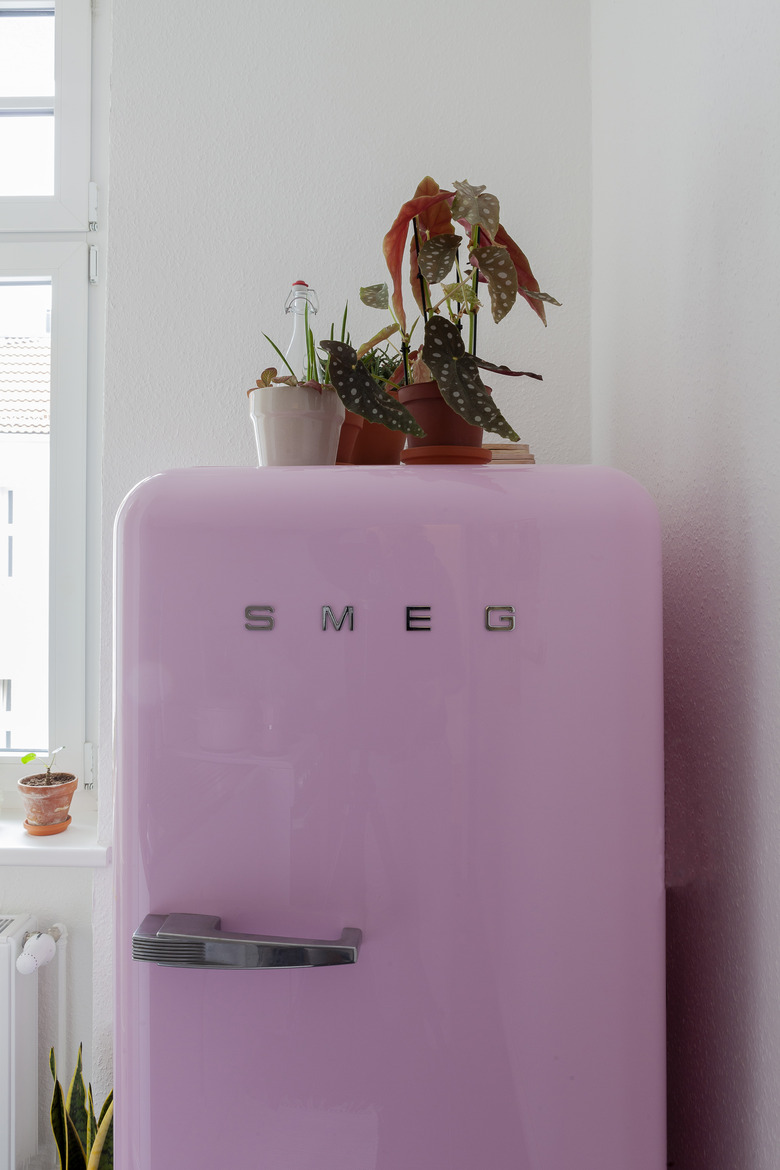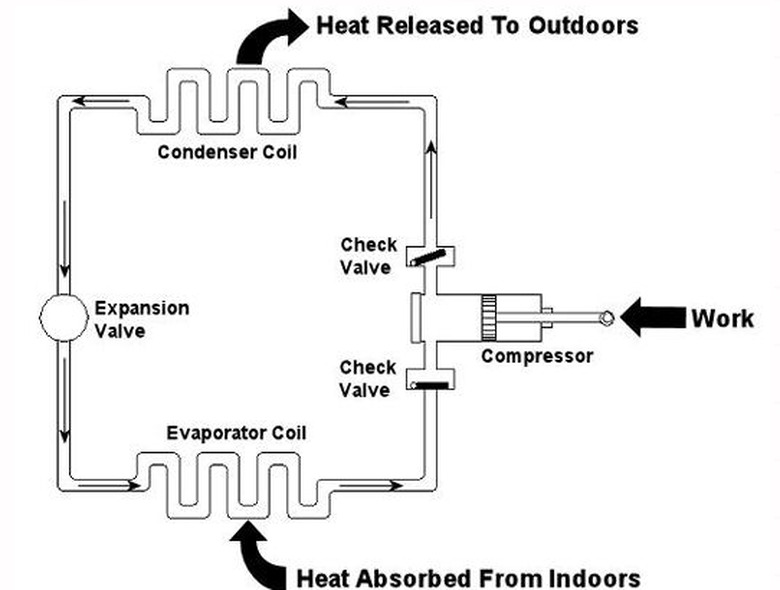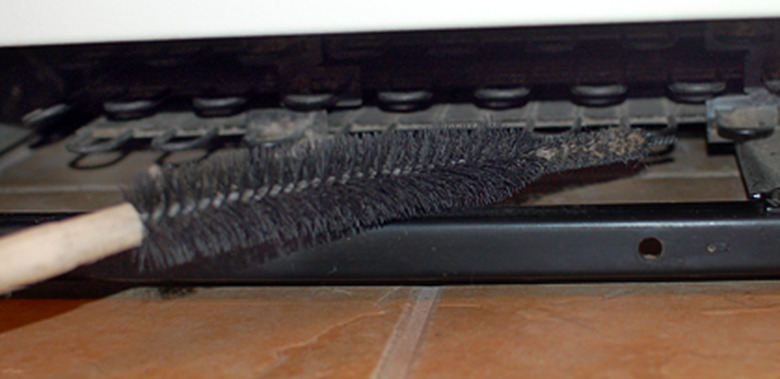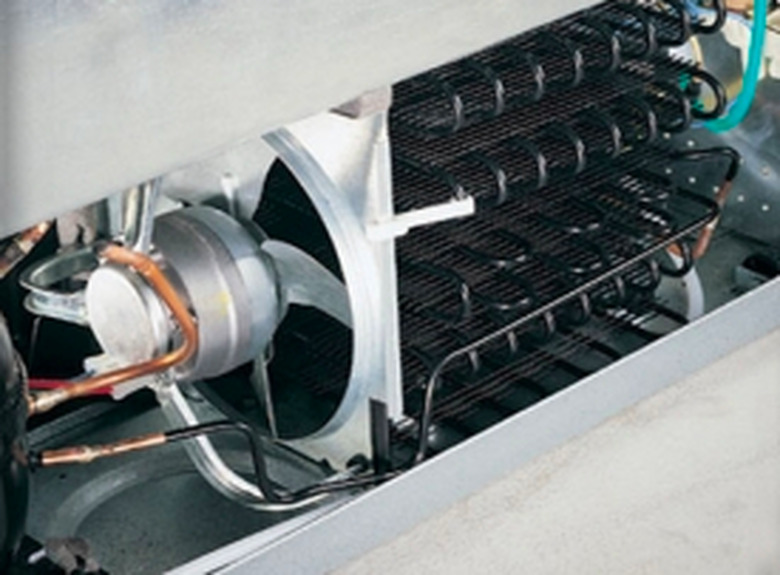How To Clean Refrigerator Coils
You may be meticulous about keeping the inside and outside of your refrigerator clean and organized, but if you don't pull it out from the wall and clean behind it, you're missing the most important part. All but the most modern refrigerators have exposed coils that collect dust and pet hair. The debris can prevent the coils from ventilating themselves and ultimately affect the performance of the refrigerator.
Contemporary models offered by manufacturers such as GE and Frigidaire have "Never Clean" coils sealed in the condenser housing. They don't collect dust, but the housing does, and it, too, should be cleaned. As a rule of thumb, any coils you can see when you look behind, underneath or on top of your refrigerator can collect dust, and they need periodic cleaning. If you neglect to do this for years on end, as many homeowners do, you may find your food starting to spoil because the appliance no longer cools efficiently.
How Dirty Coils Affect Refrigerator Performance
A refrigerator actually has two sets of coils, and they are at opposite ends of the refrigeration cycle. In a typical refrigeration system, a condenser pressurizes a refrigerant— usually _tetrafluoroethane—_and sends it as a liquid through a system of condenser coils to an expansion valve. This is a small aperture, much like a spray nozzle. The liquid that makes it through evaporates in a second coil system—the evaporative coils—and the change of state sucks heat from the air and cools the environment around the coils, much as the evaporation of sweat cools the human body. The refrigerant passes back into the condenser chamber through a check valve where it begins the cycle again.
The evaporative coils are located behind the freezer compartment, and while they might be able to ice over, they never collect dust and therefore don't need cleaning. The condenser coils are another matter. They have to be located near the condenser, and the condenser generates heat. As a result, the coils get hot during normal operation. The manufacturer supplies a fan to cool them off, but the air that circulates through the fan often contains dust, pet hair and kitchen grease, and the debris collects on the coils.
Dust on the condenser coils acts as insulation, effectively preventing the coils from cooling off. This can cause the condenser to overheat and fail unless the coils are cleaned regularly. Eventually, the condenser is unable to maintain the temperature in the refrigerator, and food starts to go bad.
How to Clean Refrigerator Coils
Cleaning refrigerator coils is not a time-consuming or demanding task, and you should do it every six months or so. You need two tools to do a thorough job—a coil brush and a vacuum cleaner with a crevice accessory. You may also need a rag.
- Whether the coils are underneath, behind or on top of the appliance, the first step in cleaning is disconnect power. Pull the refrigerator away from the wall and pull the plug. If the unit is too big to pull away from the wall to get to the plug, turn off the breaker for the refrigerator circuit.
- The next step is to give yourself access to the coils. If they are on the bottom or on top, remove the grille from the front of the appliance to access them. If the coils are on the back, they may be covered by a protective grid. Remove it, if possible, so you can get behind the coils.
- Dust the coils thoroughly with the coil brush. If the coils are on top, you may have to reach through the condenser fins to get to them. The fins are sharp, so wear gloves and a long-sleeved shirt to avoid cuts. If the coils have accumulated grease from the air and some dust is stuck to it, clean the grease off with a rag.
- Clean the condenser itself, as well as the fins around the condenser, while you're cleaning the coils.
- Finally, use the vacuum cleaner to get into places you can't reach and to pick up dust from the floor and from underneath the condenser.
Even "Never Clean" Condenser Coils Need TLC
If your refrigerator has "Never Clean" condenser coils or something similar, you should still clean the condenser housing. This isn't a solid casing, but rather a cage-like enclosure that allows air from the ventilation fan to circulate over the coils and blow dust away. Even though dust doesn't collect on the coils, it collects on the housing, and this can interfere with air circulation. You don't have to clean the housing as often as you have to clean exposed coil—just do it every two years or so.
The Never Clean condenser is usually located underneath the refrigerator. You access it by pulling the refrigerator away from the wall, unplugging it and removing a back panel by taking out some screws. Use a vacuum with a crevice attachment to suck dust off the housing. It's best not to use a coil brush, because it will force dust through the housing and onto the coils. You might want to wipe down the housing with a damp rag after vacuuming it. When you're done, don't forget to replace the back panel before you plug in the refrigerator and push it back against the wall.



